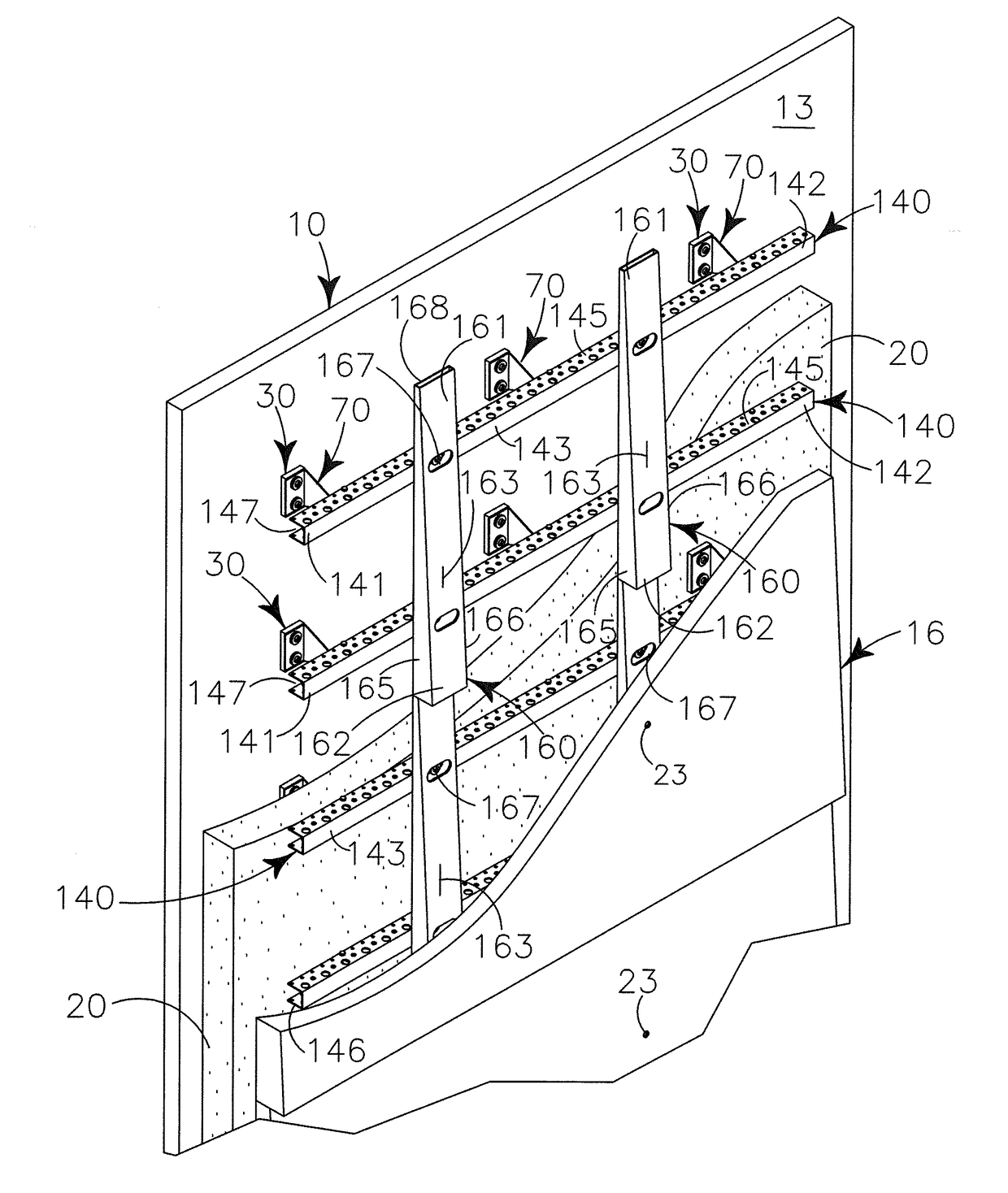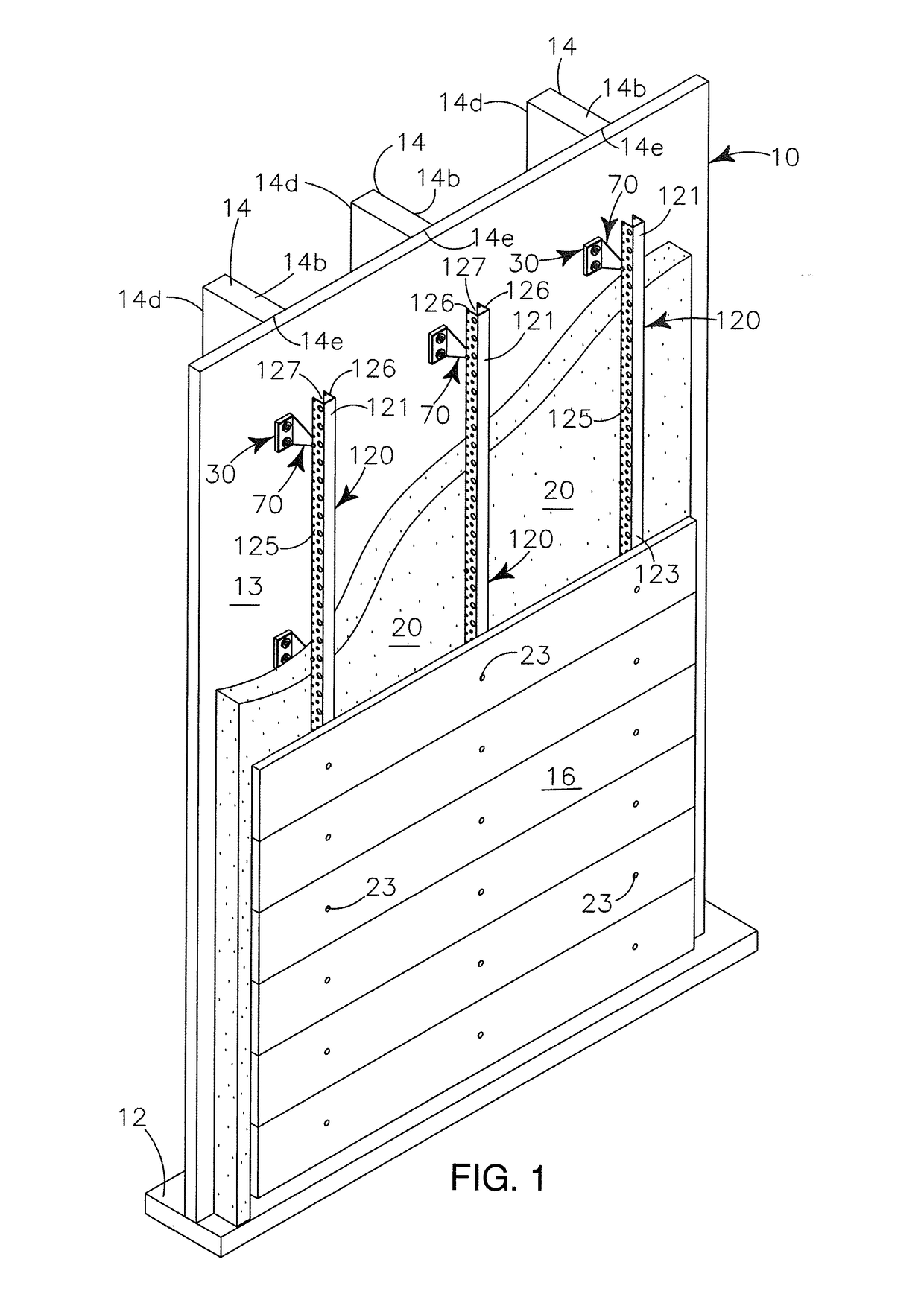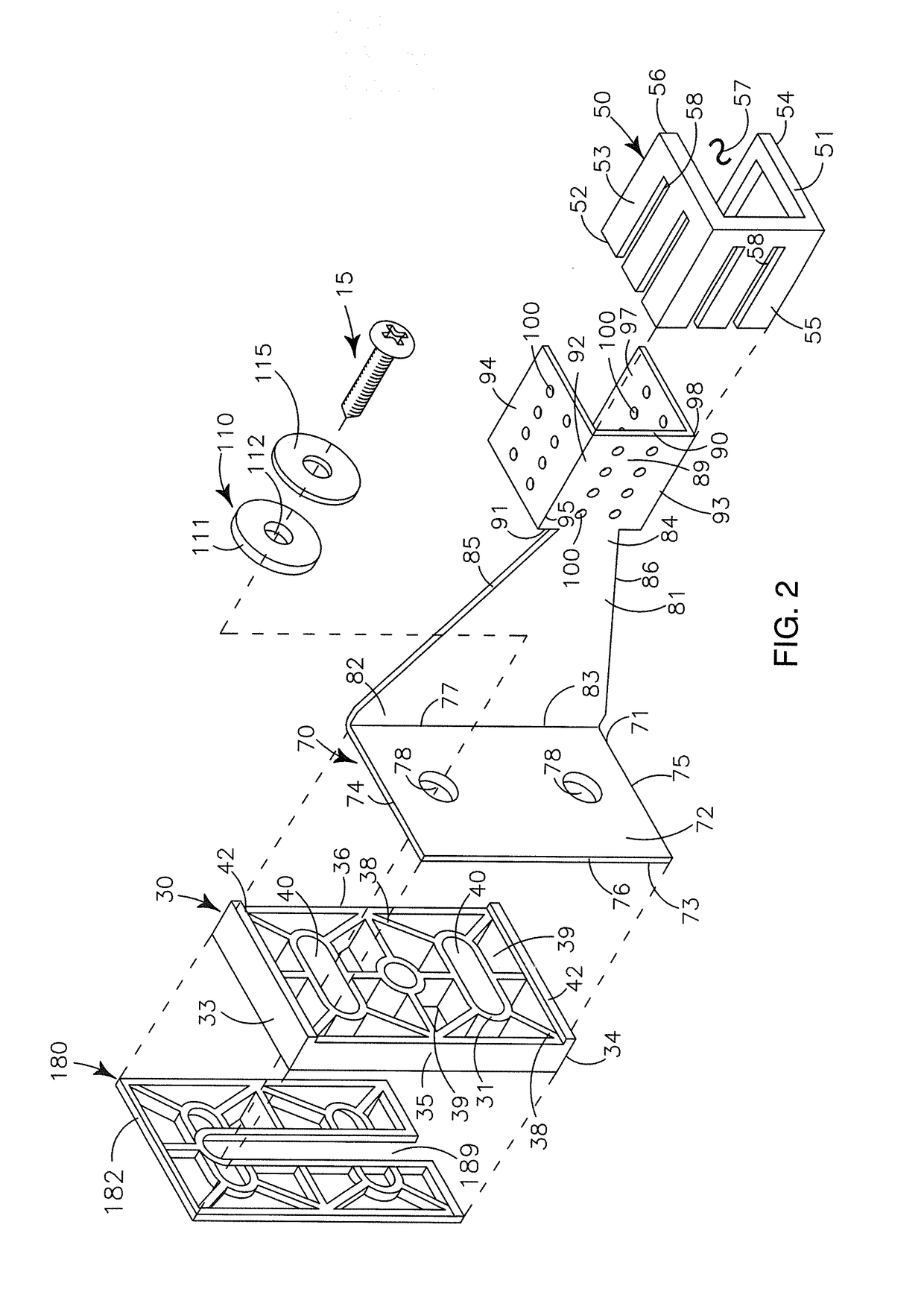Modular system for continuously insulating exterior walls of a structure and securing exterior cladding to the structure
a technology of modular system and exterior wall, applied in the field of static structures, can solve the problems of reducing the insulation effectiveness of studs, reducing the thermal efficiency of walls formed by such methods, and reducing the insulative value of studs, so as to achieve effective moisture management within the wall assembly and reduce condensation
- Summary
- Abstract
- Description
- Claims
- Application Information
AI Technical Summary
Benefits of technology
Problems solved by technology
Method used
Image
Examples
Embodiment Construction
Introductory Notes
[0077]The readers of this document should understand that the embodiments described herein may rely on terminology used in any section of this document and other terms readily apparent from the drawings and the language common therefore as may be known in a particular art and such as known or indicated or provided by dictionaries. Widely known and used in the preparation hereof are Webster's Third New International Dictionary (©1993), The Oxford English Dictionary (Second Edition, ©1989), The New Century Dictionary (©2001-2005) and the American Heritage Dictionary of the English Language (4th Edition ©2000) all of which are hereby incorporated by reference for interpretation of terms used herein and to more adequately or aptly describe various features, aspects and concepts shown or otherwise described herein.
[0078]This document is premised upon using one or more terms for features shown in one embodiment that may also apply to or be combined with other embodiments...
PUM
 Login to View More
Login to View More Abstract
Description
Claims
Application Information
 Login to View More
Login to View More - R&D
- Intellectual Property
- Life Sciences
- Materials
- Tech Scout
- Unparalleled Data Quality
- Higher Quality Content
- 60% Fewer Hallucinations
Browse by: Latest US Patents, China's latest patents, Technical Efficacy Thesaurus, Application Domain, Technology Topic, Popular Technical Reports.
© 2025 PatSnap. All rights reserved.Legal|Privacy policy|Modern Slavery Act Transparency Statement|Sitemap|About US| Contact US: help@patsnap.com



